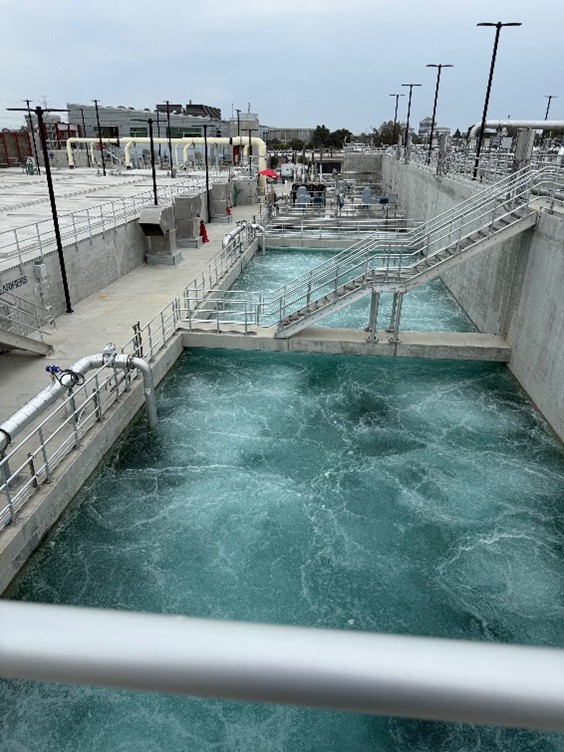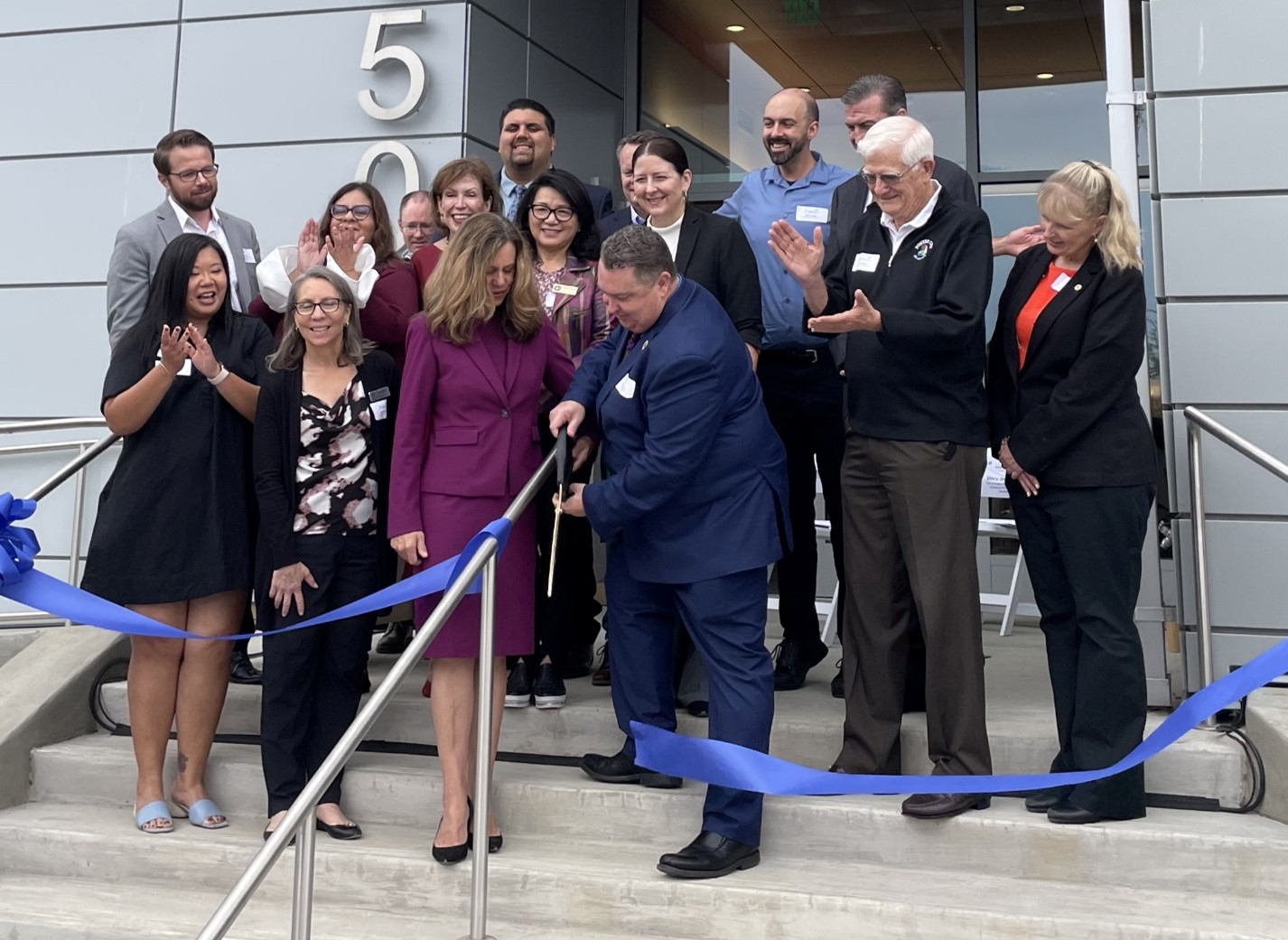Wastewater treatment plant in San Mateo opens after major upgrade and expansion
State-funded project helps protect San Francisco Bay and Peninsula residents
SACRAMENTO – The State Water Resources Control Board joined the cities of San Mateo and Foster City, the Estero Municipal Improvement District and elected officials today to celebrate the completion of a $552 million upgrade and expansion of the San Mateo Wastewater Treatment Plant, which serves over 150,000 people in San Mateo, Foster City, Hillsborough and other Bay Area communities.
Constructed in three phases over five years, the upgrades to the treatment plant increased system capacity to better manage major storm events and prevent sewer system overflows that can threaten public health and San Francisco Bay. The upgrades enable the plant to produce high-quality treated wastewater that meets state and federal requirements.
“Upgrading our wastewater infrastructure to withstand extreme weather is a critical part of adapting to climate change for most towns and cities,” said State Water Board Member Sean Maguire. “Infrastructure improvements are a major undertaking that require years of planning and extensive financing. We at the board are proud to partner with cities like San Mateo to provide grants and loans that make large-scale projects more affordable and, ultimately, achievable for municipalities and their customers.”

Photo of pools at newly upgraded San Mateo Water Treatment Plant
The State Water Board provided over $137 million from the California Clean Water State Revolving Fund for the project at a low interest rate that saves ratepayers nearly $22 million over time. Since 2022, the board has distributed $3.5 billion for wastewater infrastructure upgrade and replacement projects around the state.
In the past, the San Francisco Bay Regional Water Quality Control Board cited the plant for sewer overflows and directed that a plan be developed to prevent them. This project executes the plan with updates to the plant’s primary treatment facilities, increases in its hydraulic capacity to process wet weather flows, improvements to its effluent quality with the addition of nitrification and denitrification treatment processes and the expansion of the plant to include new headworks, primary clarifiers, an odor control system and biological nutrient reactors.
The project also includes advanced treatment technology that will significantly reduce nutrient discharges to the bay. Nutrient discharges from wastewater facilities to the bay are one of the contributing factors to harmful algae blooms seen in recent years.
“Protecting our Bay and providing clean water for our community is at the heart of this project," said San Mateo City Manager Alex Khojikian. "We built one of the most sustainable treatment plants in the nation — a facility that not only safeguards public health and prepares us for climate change, but also welcomes residents with new walking paths, landscaping and educational features. This is an investment in both our environment and our quality of life for generations to come.”
In addition to a state loan, the project received federal funding from U.S. EPA’s Water Infrastructure Finance and Innovation Act (WIFIA) program.
For more information about the State Water Board’s financial assistance, visit the board’s website

State Water Board Member Sean Maguire, far left, at this morning’s ribbon cutting with Estero Municipal Improvement District and elected officials.
The State Water Board’s mission is to preserve, enhance and restore the quality of California’s water resources and drinking water for the protection of the environment, public health, and all beneficial uses, and to ensure proper resource allocation and efficient use for the benefit of present and future generations.


